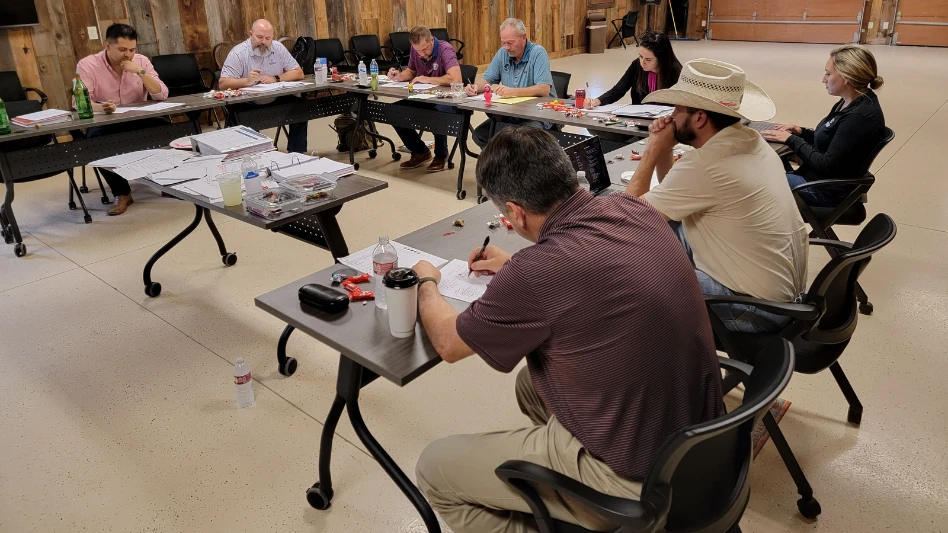The primary goal of human resources is to improve employee job performance. Employee performance evaluations are the process by which that goal is directly measured. This article presents key points aimed at increasing the likelihood that performance evaluations will improve employee job performance.
Context. It all starts at the top. The company’s management team is uniquely responsible for defining the company’s annual goals (e.g., 15 percent revenue growth, 47 percent gross margin, 10 percent decrease in loss runs, 95 percent customer retention) and for developing a strategic plan to achieve those goals. A large part of that plan is communicating the goals to the employees, explaining how each employee is accountable for contributing to those goals, and clarifying how each employee’s performance will be evaluated relative to those goals.
Without the empirical goals and tandem communication, employee performance cannot be improved due to the lack of a defined standard. With many companies on a calendar year fiscal cycle, I strongly suggest they conduct their annual planning sessions in December, summarize organizational results in January, and evaluate the individual performance of all employees at above the level of foreman in early February. This timeframe ensures all employees receive the same formal communication, regarding the same goals, at the same time.
Content. Before completing the employee’s performance evaluation form, the supervisor must carefully review the employee’s job description, personnel file, previous year’s performance evaluation form and stated goals, all job-related documentation kept by the supervisor, and gather additional information about the employee from relevant sources (e.g., human resources, other supervisors, customers). To improve content quality, the company should also provide basic performance evaluation training (e.g., observation, rating bias, performance dimensions and performance standards) to all supervisors in late January.
With that information in mind, the supervisor must complete the performance appraisal form by only evaluating the employee’s job-related behavior, not the employee’s personal qualities. Every rating must be supported by specific behavioral examples.
Under no circumstances should the supervisor ever allow the employee to complete his/her own performance evaluation form. The supervisor should also have a written development plan in place to assist the employee in reaching the next performance level. Once the form is completed, the supervisor should schedule a 60-minute meeting with the employee.
Process. The actual performance evaluation meeting is a supervisor-led discussion focused exclusively on the employee’s contributions to the company’s goals. The supervisor presents the individual ratings with behavioral support to the employee, thereby stimulating dialogue regarding performance strengths and weaknesses. Supervisors must understand this collaborative process is about feedback; it is not a game of “gotcha.” That is to say, no employee should ever be surprised by any rating, comment, or observation made by the supervisor. If the employee is surprised, the supervisor evidently did not provide suitable coaching to the employee throughout the previous rating period.
To enhance the value of this meeting and the goal of improving employee job performance, the supervisor must be: fair, well prepared, constructive, a good listener, and capable of tailoring the process, performance expectations, and the company’s goals to the employee. By the end of the meeting, the employee should have a clear understanding of the company’s goals for the current year, the employee’s strengths and weaknesses and an action plan aimed at performance improvement.
Outcome. The finalized performance evaluation form, signed by the supervisor and employee, represents formal documentation that may be used in future coaching sessions, next year’s performance review, and possible disciplinary action or litigation; it must be kept in the employee’s personnel file.
After the performance evaluation meeting, the supervisor should schedule monthly one-on-one follow-up meetings with the employee to ensure the employee continues to work efficaciously toward the agreed-upon goals.
Summary. For landscape companies to improve, landscape employees’ job performance must improve. Before job performance can improve, it must be measured consistently, communicated clearly and aligned properly with the company’s goals.
A high-quality, non-bureaucratic performance evaluation system can achieve all of those goals to improve organizational results.
Steve Cesare is an industrial psychologist with the Harvest Group, a landscape consulting group. Send your HR questions to cesare@gie.net.

Explore the February 2013 Issue
Check out more from this issue and find your next story to read.
Latest from Lawn & Landscape
- LMN partners with Attentive.ai
- Get to know the generations working for you
- Addressing addiction in landscaping
- Fairway expands national footprint with 6 acquisitions
- Graze Robotics opens new headquarters in Plano, Texas
- Addiction in the green industry
- Kress earns Sourcewell approval
- The best laid plans





